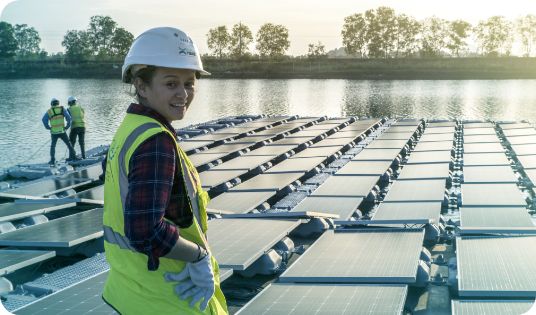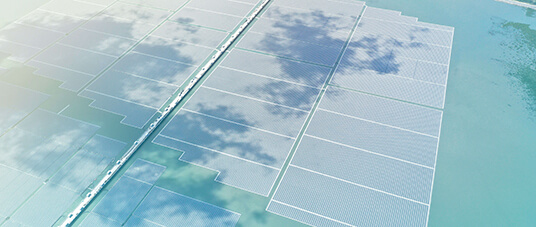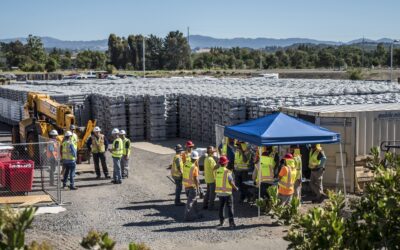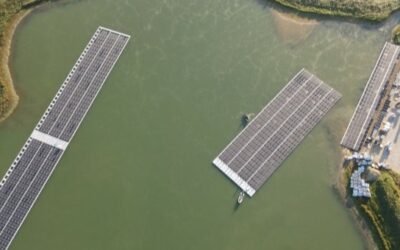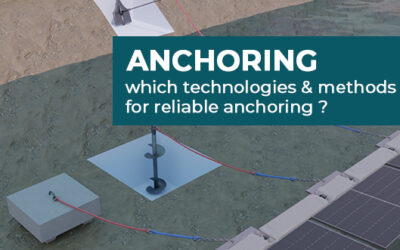There are many floating solar-compatible ponds available for future projects all over the world. Ciel & Terre offers you the opportunity to find out more about the impact of your pond location and your site parameters for hosting a floating solar power plant.
The incidence of untouchable parameters on the floating solar compatibility of reservoirs
The power of solar radiation: a variable to consider for FPV
Firstly on a world scale, the floating solar potential is notably related to the Global Horizontal Irradiation (GHI). By definition, the GHI represents the power of sun radiations per unit area (as per international standards, we often use Wh/m2). So, it includes the direct radiations from the sun – hitting the earth’s surface after crossing the atmosphere excluding absorption or diffusion losses – and the diffuse radiations, which are the light propagated by the atmosphere embodied by the sky.
Generally, the GHI decreases when moving away from the equator, towards the north and the south. As an illustration, the map shows the long-term average horizontal irradiation degree worldwide. For instance, the blue-green extreme of the color shade shows where irradiation is the lowest while warm tones to red-pink extreme show where it is most intense.
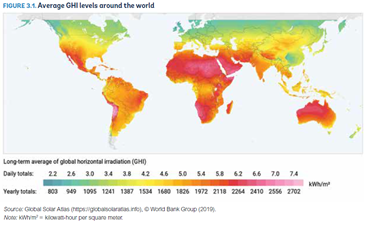
In summary, the GHI map highlights the fact that a great proportion of the world’s countries benefits from “good” to “high” irradiation ratings. For this reason, it makes the use of solar energy particularly relevant to have more renewable energy mix. Even cold-colored countries have a significant potential. Meaning solar power can be applied in different regions of the world with a varying GHI which makes many ponds compatible with floating solar. If we consider the case of France for example (which shades between 1 000 and 1 500 kWh/m2 per year) the photovoltaic electricity generated is around 11.5 TWh out of the 1 420 TWh produced worldwide (~ 1%).
Numerous FPV-compatible water bodies are available and usable
Fortunately, the available and usable water surface on which we can installed floating solar power plants is large. Considering only man-made reservoirs, using 1% of them would already correspond to a capacity of 400 GWp of electricity produced by floating solar. In fact, with a 10% coverage, this number would reach a terawatt. Finally, all the populated continents are concerned by this great perspective, and none is under-represented accordingly with its geography.
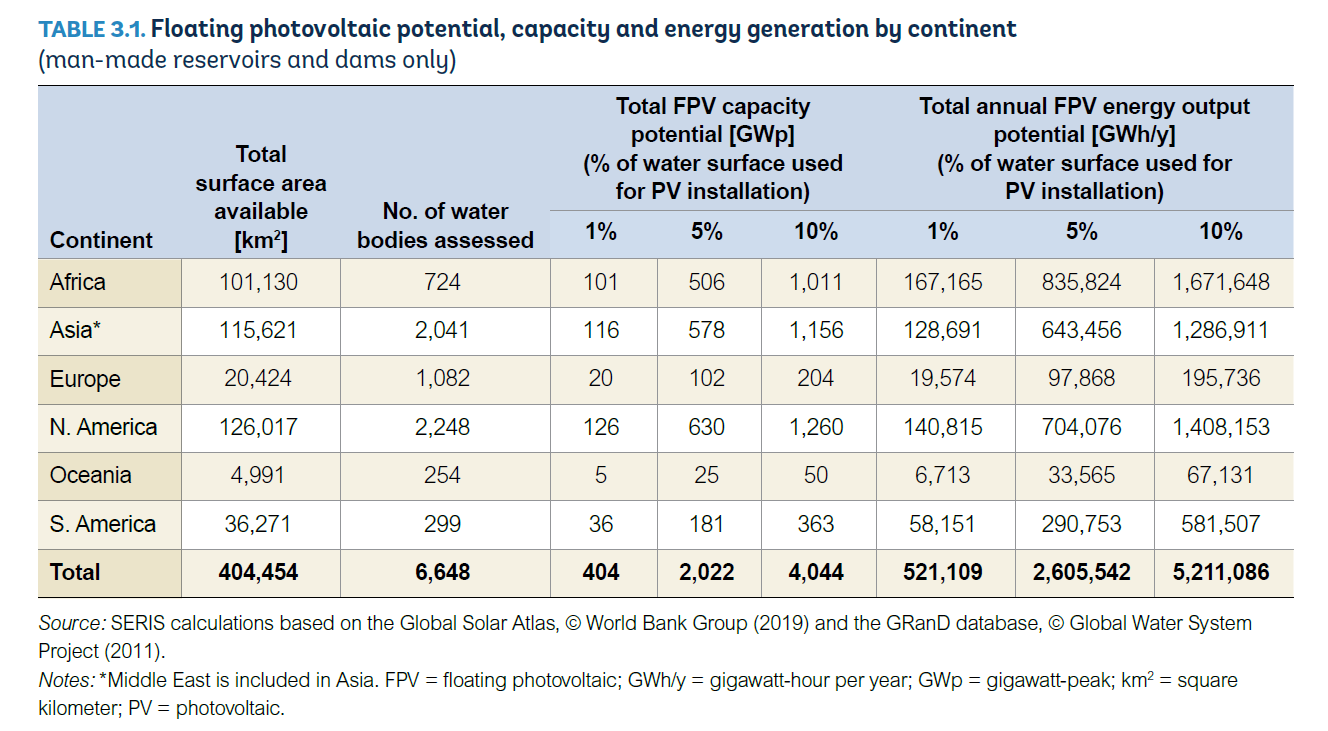
The advantages of a flexible and favorable legal framework to develop floating solar energy on compatible ponds
Though quite reduced, the legal framework of countries plays a great role in the deployment of solar. It depends a lot on the national energy strategy. Aware of the importance of bringing clean energy opportunities to the increasing energy demand, the global trend is favorable to the installation of solar facilities. Indeed, the COP26 includes in its Glasgow pact, ratified by 197 countries, the exit of fossil fuels – implying stopping their subsidization and phasing out coal use. In addition, at a country scale, it takes the form of a government call for tenders and/or state or local authorities’ subsidies depending on the maturity of the national market.
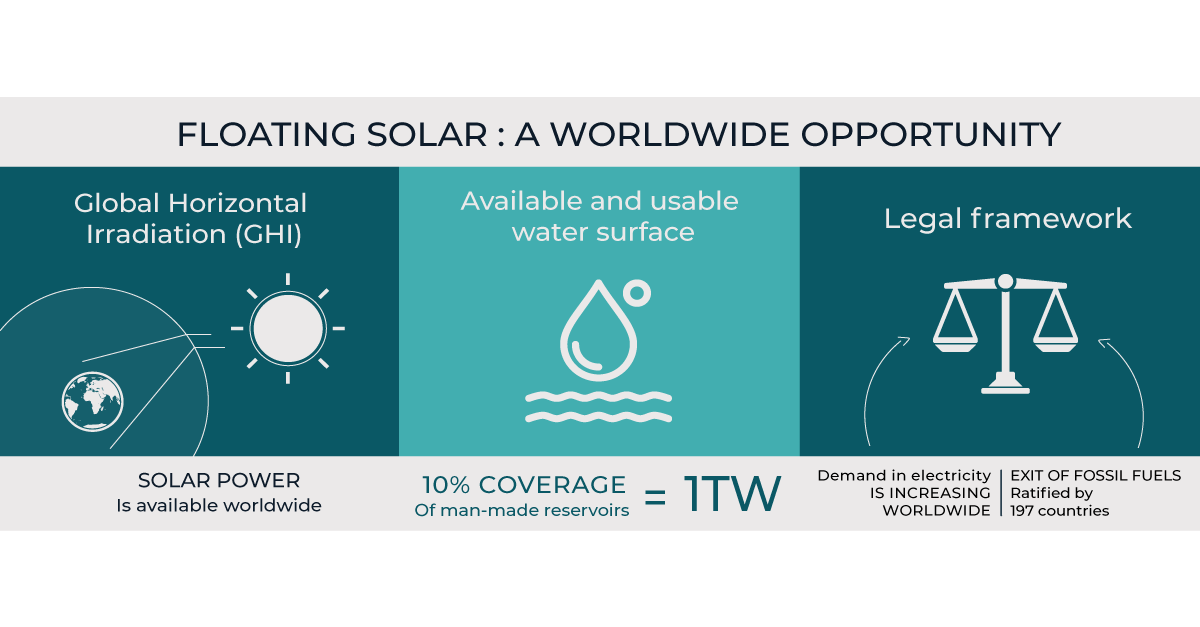
Floating solar applies to various kind of ponds and applications
Stereotypes about floating solar energy and compatible lakes
“FLOATING SOLAR IS INSTALLED ON FEW TYPES OF PONDS ONLY, WITH LOW ENVIRONMENTAL LOADS.”
Above are the first thoughts one could have when floating solar emerged some years ago. Floating solar is a concept born around the 2010’s. At the very beginning, it was mainly deployed on basins like irrigation ponds. Over time though it has been extended to other types of water bodies and is now applicable to a large range of them, even challenging ones. In fact, floating solar compatible ponds are numerous. In other words, they are not exclusive to countries facing land scarcity, or for the sunniest regions on the globe.
Moreover, in the report “Where Sun Meets Water” (2019), the World Bank Group, ESMAP and SERIS estimate that “with a [minimal] potential of 400GWp […], FPV could become a significant market segment for solar photovoltaic deployment”. In fact, floating solar power has great potential in the worldwide market and offers numerous benefits, such as:
- Preserving precious lands
- Reduced evaporation of water
- Limit algae growth
- Cooling effect of solar panels and improved efficiency
- Contribution to green energy production
But all these advantages are not exhaustive. However, they are all arguments in favor of large-scale deployment of floating solar power.
Availability of a wide range of pond types for floating solar projects
By now, let’s get more in-depth with the possible types of these available water bodies. Whatever its purpose may be, floating solar likely fits. Indeed, a large range of water bodies is eligible on the condition that a site study is carefully conducted and that the projects are managed with expertise by experienced teams. For instance, below is an overview of where we can install floating power plants thanks to our floating solar solutions.
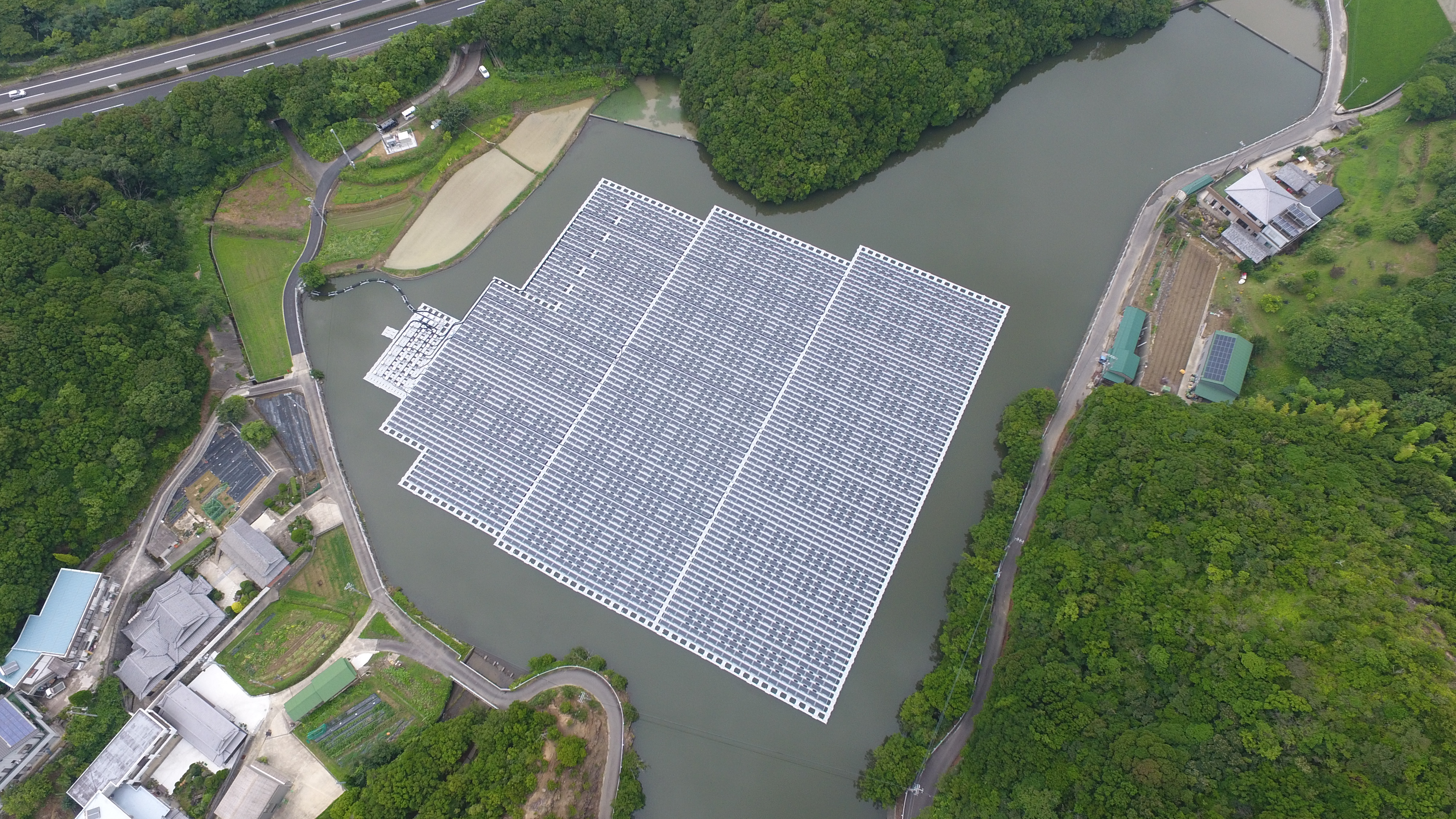
IRRIGATION PONDS - HIKUNI IKE, JAPAN | 1.31 MWP
The landowners get off-grid electricity or earn revenue while benefiting from the water-related advantages of floating solar: limited evaporation… to preserve water for their activities.
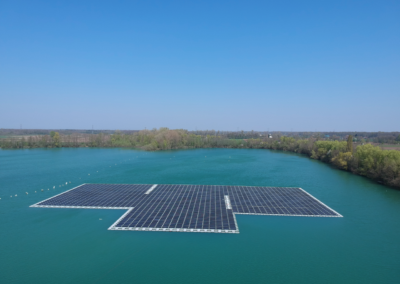
QUARRY PONDS - MAIWALD, GERMANY | 750 KWP
For this plant, we innovated with a parabolic mooring line in so that the FPV farm owner could continue their quarry activity.

STORAGE RESERVOIRS - WANXING, TAIWAN | 22.8 MWP
Reducing water evaporation is also an interesting asset for ponds aiming to store water.
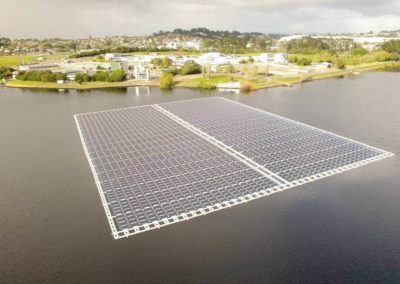
WATER TREATMENT PONDS - ROSEDALE, NZ | 1.04 MWP
This is the 1st FPV and the biggest PV plant in New Zealand. Thanks to the floating solar plant, the electricity produced helps provide the energy needs of the WTP.
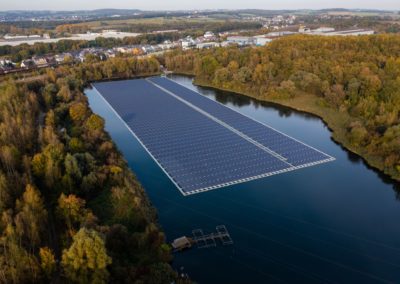
INDUSTRIAL PONDS - DIFFERDANGE | 3.05 MWP
The landowners get off-grid electricity or earn revenue while benefiting from the water-related advantages of floating solar: limited evaporation… to preserve water for their activities.

HYDRODAMS - SOBRADINHO, BRASIL | 1 MWP
Floating solar can adapt to demanding environment including a certain level of waves and a of water level variation. For the featured projects:
- Maximum depth: 29.3 m
- Water level variation: 13 m
Every FPV compatible pond is unique
Because floating solar technology is becoming a major player in the solar market, our teams innovate every day to offer you innovative solutions tailored to your needs and the characteristics of your site. No two ponds are alike, which is why our expertise is essential to build your floating solar project. Finally, it is the uniqueness of each project that allows us to take on new challenges.
Today, we can also install projects on areas subject to constraints like floodplains or reservoirs which empty fully. As we are constantly innovating and doing our utmost to satisfy our clients, we will strive to meet their expectations.
However, the synergy between sun and water is true for all projects. There is no doubt that floating solar energy enables us to save land and water, both valuable resources in our world.
Discover all our floating solar projects installed on various pond types:
